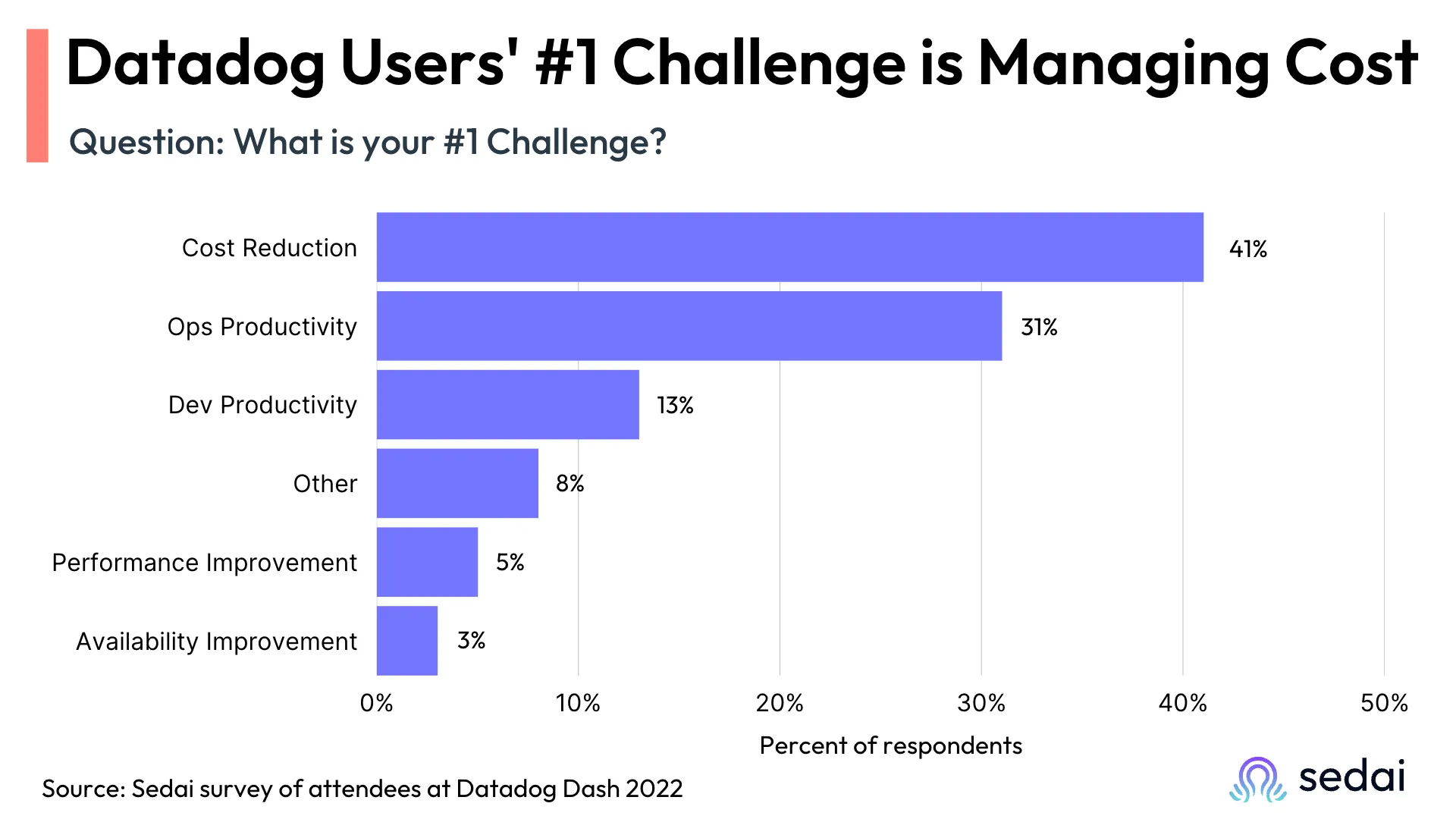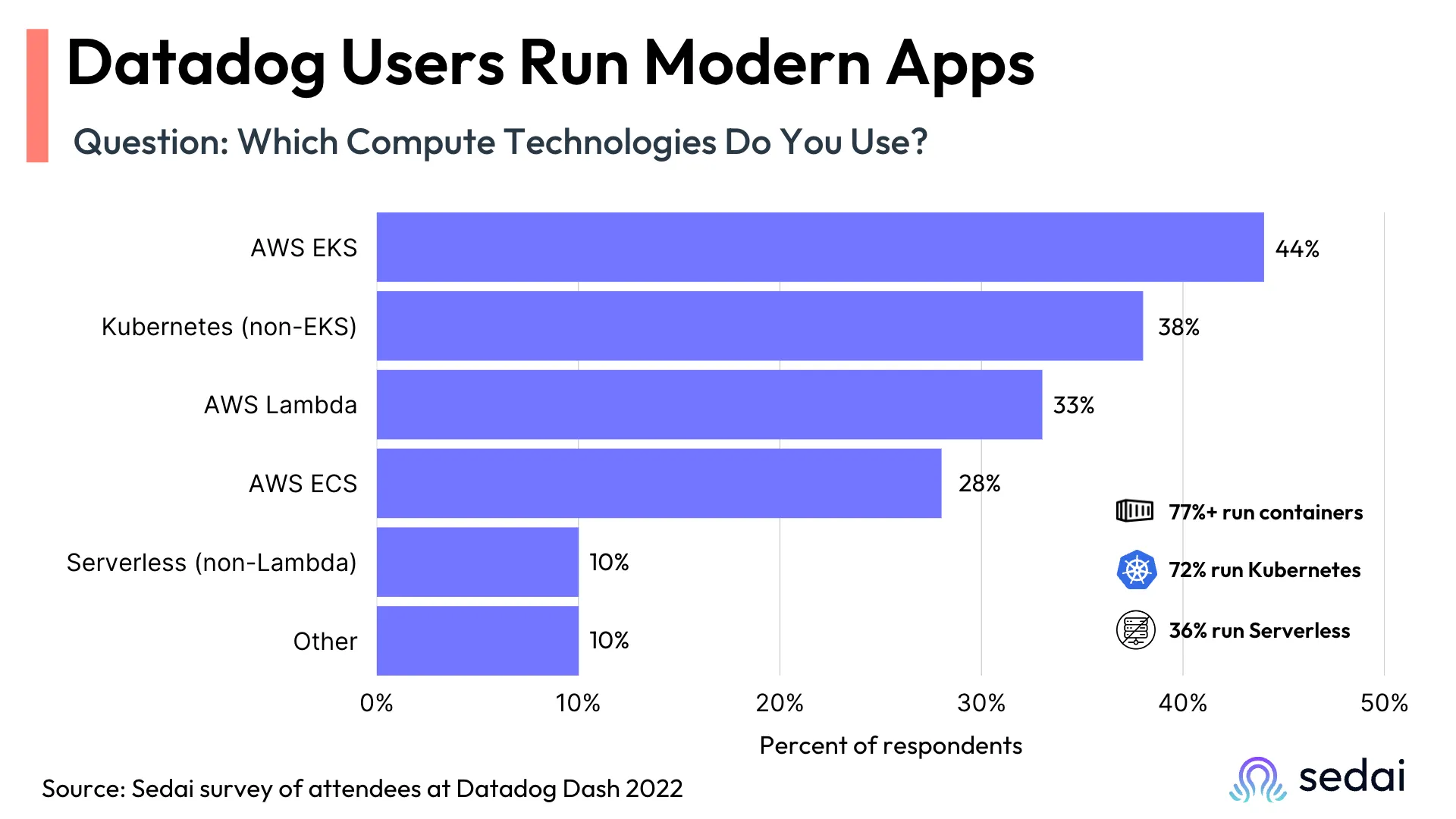Unlock the Full Value of FinOps
By enabling safe, continuous optimization under clear policies and guardrails

November 21, 2024
October 28, 2022
November 21, 2024
October 28, 2022

At Datadog Dash 2022 in New York, we conducted a survey of attendees who gave us insight into their top challenges, compute architectures, and expectations of how autonomous cloud systems will impact their top objectives.
Here are the three most important takeaways from the survey results:

We asked Datadog users what their number one challenge was. They told us their major concerns:
The high rating of cost management reflects a mix of:
If you are a Datadog Kubernetes user and cost is one of your top concerns, watch our Kubernetes Cost Workshop in which we share how Datadog users can reduce costs by 50%.

After asking Datadog users' what their #1 priority was, we then asked them what the impact of autonomous operations would have on this goal (e.g., cost):
The overall average works out to around 48% taking midpoints of these ranges.
Directionally Datadog users expect autonomous to make a material shift, which would be in line with Sedai's experience e.g., ecommerce company & Datadog user fabric co-incidentally reduced latency by 48% after applying autonomous management. We talked with one team at Dash who noted that current automation methods consisting of setting rules after optimization of a given release were not working in an environment where development teams made regular releases. As they put it "automation is great but it's creating more work for our team". Their developers were releasing new code without working with the ops team to optimize for performance and cost which was driving their Kubernetes costs up.

We also surveyed Datadog users on their compute technologies. At a service level:
Overall:
Datadog users are sophisticated users of modern apps.
Datadog users can now add autonomous management capabilities, improving the performance, cost and availability of their applications while avoiding the time & cost of traditional automated approaches. Watch the video below for a walk through the limitations of current approaches, top use cases for autonomous with Datadog, and how to get setup and use Sedai with Datadog using the integration available in the Datadog marketplace.
October 28, 2022
November 21, 2024

At Datadog Dash 2022 in New York, we conducted a survey of attendees who gave us insight into their top challenges, compute architectures, and expectations of how autonomous cloud systems will impact their top objectives.
Here are the three most important takeaways from the survey results:

We asked Datadog users what their number one challenge was. They told us their major concerns:
The high rating of cost management reflects a mix of:
If you are a Datadog Kubernetes user and cost is one of your top concerns, watch our Kubernetes Cost Workshop in which we share how Datadog users can reduce costs by 50%.

After asking Datadog users' what their #1 priority was, we then asked them what the impact of autonomous operations would have on this goal (e.g., cost):
The overall average works out to around 48% taking midpoints of these ranges.
Directionally Datadog users expect autonomous to make a material shift, which would be in line with Sedai's experience e.g., ecommerce company & Datadog user fabric co-incidentally reduced latency by 48% after applying autonomous management. We talked with one team at Dash who noted that current automation methods consisting of setting rules after optimization of a given release were not working in an environment where development teams made regular releases. As they put it "automation is great but it's creating more work for our team". Their developers were releasing new code without working with the ops team to optimize for performance and cost which was driving their Kubernetes costs up.

We also surveyed Datadog users on their compute technologies. At a service level:
Overall:
Datadog users are sophisticated users of modern apps.
Datadog users can now add autonomous management capabilities, improving the performance, cost and availability of their applications while avoiding the time & cost of traditional automated approaches. Watch the video below for a walk through the limitations of current approaches, top use cases for autonomous with Datadog, and how to get setup and use Sedai with Datadog using the integration available in the Datadog marketplace.